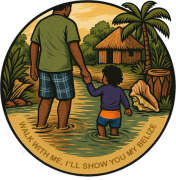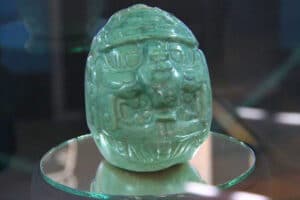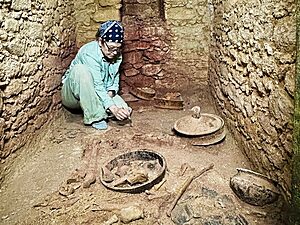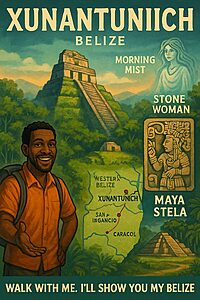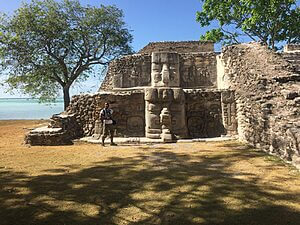Tikal Maya Ruins – The Majestic Maya Metropolis of Guatemala
Step into the heart of the ancient Maya world at Tikal, Guatemala. Discover its towering temples, powerful kings, jungle wildlife, and its connection to Belizean Maya history.
🏛️ Overview: A City of Superlatives
Tikal, located in northern Guatemala, was one of the largest and most influential cities of the ancient Maya world. It flourished between 200–900 CE and is now a UNESCO World Heritage Site nestled in the lush Petén rainforest. While not in Belize, Tikal’s importance shapes how we understand Belize’s own Maya heritage.
Quick Facts
- Location: Petén Department, Guatemala
- From San Ignacio, Belize: ~2 hours (by road)
- Earliest occupation: ~600 BCE
- UNESCO World Heritage Site: Yes (since 1979)
- Best for kids: Older children and teens (due to long hikes)
- Guided tour recommended: Highly recommended for context
👑 History & Rulers
Tikal was ruled by powerful dynasties such as the Jaguar Claw and Stormy Sky kings. It engaged in military conflict and alliances with other Maya city-states like Calakmul, Caracol, and Dos Pilas. Temple inscriptions, stelae, and altars across the city preserve the legacy of these rulers and their ceremonies.
Tikal’s influence reached into what is now western Belize. Caracol, a major site in Belize, once defeated Tikal in battle around 562 CE—marking a rare and significant shift in Maya power dynamics.
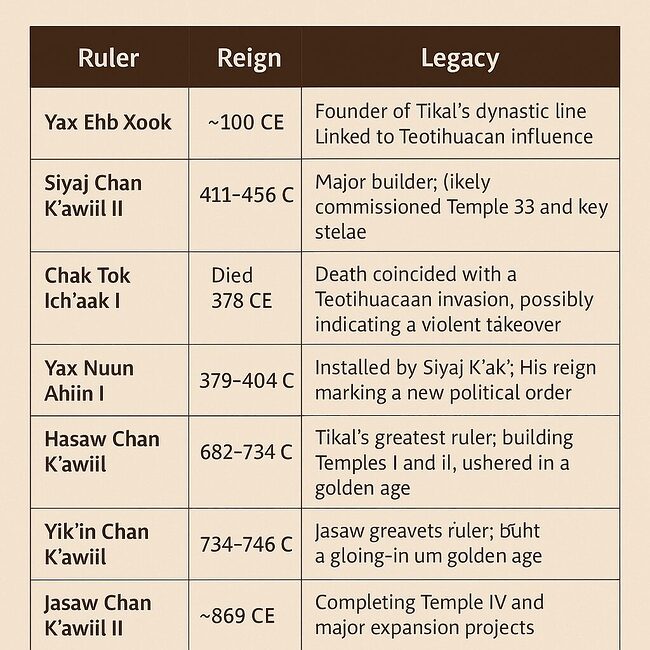
🏛️ Architecture & Layout
Tikal is famous for its towering temples that pierce the jungle canopy. Key structures include:
- Temple I (Temple of the Great Jaguar): Royal tomb
- Temple IV: Tallest pre-Columbian structure in the Americas
- Central Acropolis: Residential and administrative complex
- Great Plaza: Ceremonial heart of the city
The city is organized around ceremonial plazas connected by causeways (sacbeob), demonstrating a mix of religious function and urban planning.
🔢 Math, Astronomy, and Alignment
📆 Calendar and Ceremonial Timing
Tikal’s towering pyramids weren’t just architectural marvels—they were cosmic markers. El Mundo Perdido (The Lost World complex) functioned as an astronomical observatory aligned with solstices. Hieroglyphic inscriptions throughout the site track katun cycles (20-year periods), revealing how rulers used calendar events to legitimize their power. Ceremonies timed with the Long Count calendar likely involved public rituals, incense offerings, and elite performances in the Grand Plaza. These acts reinforced divine right and cosmic order—core to Classic Period Maya rule.
🌳 Rainforest Wildlife
Tikal is as much a wildlife sanctuary as it is an archaeological site. Visitors often see:
- Howler and spider monkeys
- Coatis and toucans
- Ocellated turkeys
- Jaguars (rarely spotted, but present)
This coexistence of ruins and biodiversity offers a surreal, immersive experience unlike any other.
🕳️ Sacred Caves and Regional Ritual Practices
🔗 Relationship to Belizean Maya Sites
Tikal’s political and military influence extended into present-day Belize:
- Caracol: Once defeated Tikal in 562 CE, later allied
- Xunantunich & Cahal Pech: Shared ceremonial and trade ties
- El Pilar: Sits on the Belize-Guatemala border with visible architectural parallels
Studying Tikal helps deepen our understanding of the regional balance of power and cultural exchange in the Maya world.
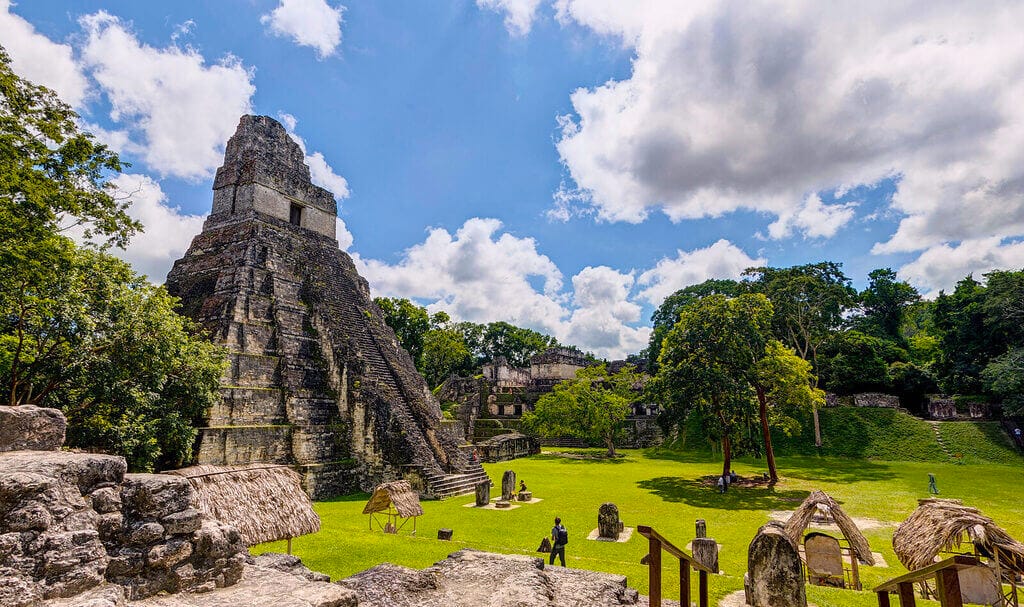
🧭 Tour Experience from Belize
Tikal is one of the most popular day trips for guests staying in western Belize. At Belize With Alvin, we often cross the border early in the morning and reach the site by 9:30 AM.
- A full-day tour includes:
- Border crossing and immigration assistance
- Breakfast stop (optional)
- Guided hike through Tikal’s core monuments
- Lunch at a local restaurant near the park
Many guests find the views from Temple IV unforgettable—especially in the dry season when mist hangs low over the rainforest.
📌 Facilities & Visitor Tips
- Hours: 8:00 AM – 5:00 PM daily
- Location: Just above San Ignacio Town (easy access)
- Restrooms: At visitor center
- Museum: Small but informative with ancient pottery and tools
- Shaded Areas: Good tree cover makes it comfortable year-round
- Footwear: Sneakers or light hikers ideal
- Accessibility: Compact site with some uneven steps
- Food Nearby: Restaurants in San Ignacio are minutes away
Pro Tip from Alvin: Go early to hear the howlers and catch mist in the trees—plus it’s cooler and less crowded.
👣 Personal Reflection from Alvin
Visiting Tikal always feels like entering another dimension. The scale alone is humbling. On my first trip, I remember the sound of howler monkeys echoing through the temple corridors. It was haunting but beautiful. Climbing Temple IV and looking over the canopy makes you wonder what the Maya saw when they ruled this world.
What’s most surprising for guests is how nature and history blend here—monkeys swinging above altars, birds nesting in the nooks of ancient temples. That’s what makes Tikal special.
🧭 Today’s Relevance
Cahal Pech is a favorite for:
- Guests looking for an easy half-day ruin visit
- Families with kids
- Travelers interested in early Maya history
It’s less crowded than larger sites and has an on-site museum with artifacts. The cool forest canopy makes it ideal year-round.
Nearby, San Ignacio offers additional attractions, from the market to local eateries and cultural experiences like the San Antonio Women’s Cooperative.
🙋♂️ Who Should Visit Cahal Pech?
- History lovers and archaeology fans
- Adventurous travelers staying in San Ignacio
- Birdwatchers and wildlife photographers
- Families with teens (younger kids may tire quickly)
Walk With Me. I’ll Show You My Belize — and Beyond.
📍 Map
📚 Sources & Further Reading
- Martin, Simon & Grube, Nikolai. Chronicle of the Maya Kings and Queens: Deciphering the Dynasties of the Ancient Maya. Thames & Hudson, 2008.
- Sharer, Robert J. The Ancient Maya. Stanford University Press, 2006.
- UNESCO World Heritage Centre. Tikal National Park — Official listing and description.
- National Geographic. Tikal: The Heart of the Maya World — A modern account of exploration and wildlife.
- Guatemalan Institute of Tourism (INGUAT). Tikal Visitor Guide
- Archaeology Magazine. Tikal Reports — Articles on recent finds and research.
- Maya Exploration Center. Tikal Research Archives — Educational insights into Tikal’s astronomy and ceremonial layout.
